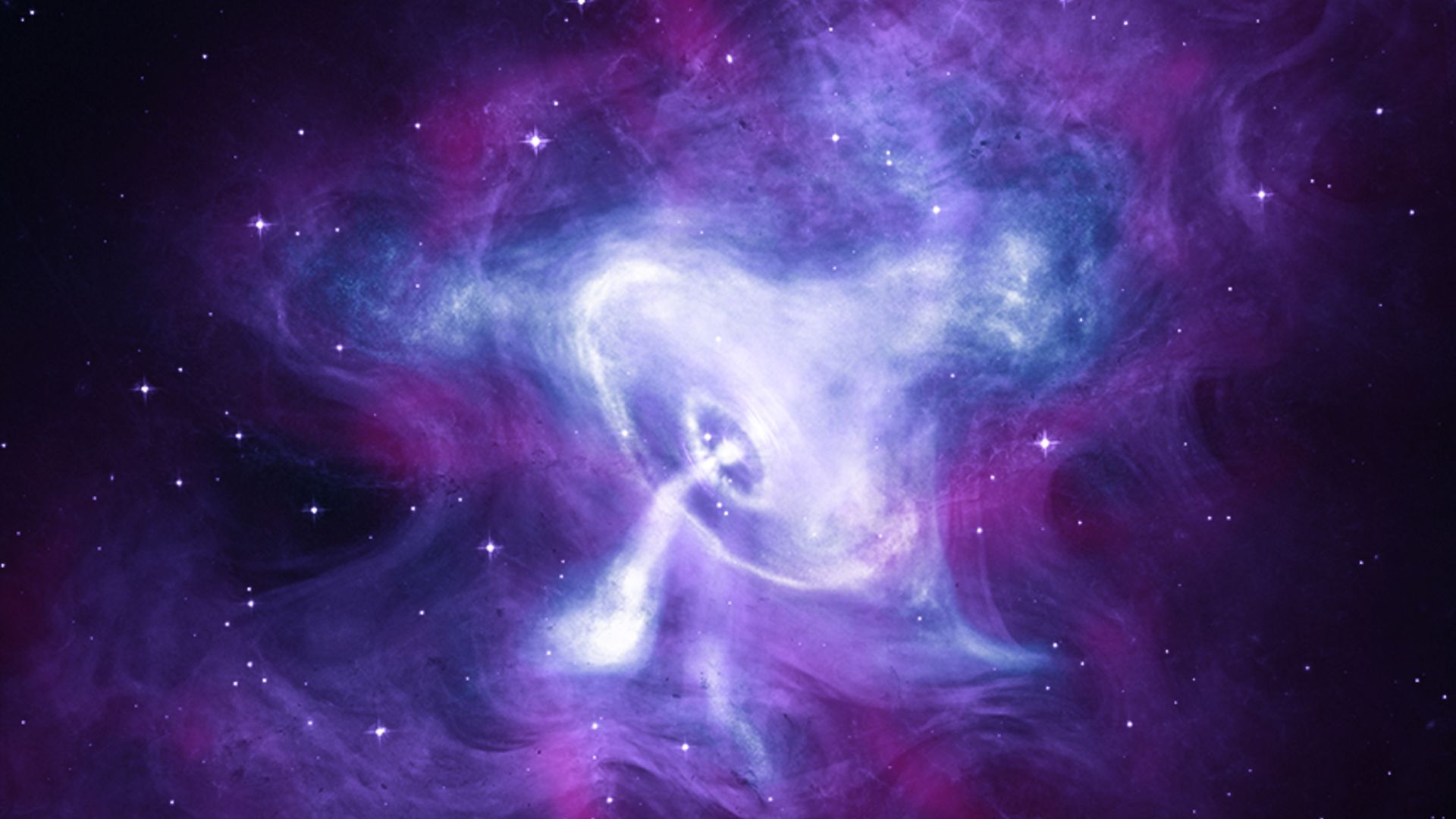
Ripples in spacetime from both the merger of supermassive black holes and from the Big Bang can potentially be distinguished by the “beats” one of them plays, a new study suggests.
During the moment of the Big Bang, “quantum fluctuations” in the universe expanded in tandem with space ballooning outward, producing what are known as primordial gravitational waves. In theory, those waves should still ripple through the universe today. They would be joined by gravitational waves coming from various other sources, such as supermassive black holes that have collided and merged in different galaxies. Together, these waves as well as the Big Bang ones should produce a background of faint ripples throughout the cosmos. So, how do we find the ripples?
To search for this gravitational-wave background, astronomers are ingeniously using arrays of pulsars. These are dead stars that spin fast enough for beams of radiation emitted from their magnetic poles to flash repeatedly in our direction, appearing as radio pulses. And importantly, pulsars are highly efficient time-keepers — among the most precise in the universe. Any deviation in their pulses is a sign that something is amiss.
If space is filled with ambient gravitational waves from inflation and supermassive black-hole binaries, then every so often one of these waves is going to ripple its way through the space between us and nearby (on a galactic scale, of course) pulsars. If a number of pulsars in roughly the same region of the sky suddenly show the same deviation in the timing of their pulses, it’s a big clue that a gravitational wave has passed between us and them.
In 2023 NANOGrav, the North American Nanohertz Observatory for Gravitational Waves, working alongside similar experiments in Australia, Europe and India, released results that strongly suggest they had detected evidence for the gravitational-wave background using pulsar timing arrays. Although the results are not yet for certain, if and when they are shown to be then the next step will be trying to disentangle all the sources of these ambient gravitational waves.
Hideki Asada and Shun Yamamoto, who are physicists from Hirosaki University in Japan, have an idea about that.
“In our paper, we explored the situation where a nearby pair of supermassive black holes produces a particularly strong signal,” said Asada in a statement. “If two such systems have very similar frequencies, their waves can interfere and create a beat pattern, like in acoustics. That feature could, in principle, allow us to distinguish them from the stochastic background of inflation.”
The gravitational waves from two supermassive black hole binaries with similar gravitational-wave frequencies (in the nanohertz regime, resulting in wavelengths many light-years long), resulting from the black holes having similar masses and similar separations, could enter a state of superposition as they pass over each other. This would result in constructive and destructive interference as the peaks and troughs of the gravitational waves align, imprinting a modulation on the pulsar timing deviations that could be detected by more sensitive instruments than are currently available.
By distinguishing the contribution from supermassive black hole binaries, astronomers will be able to get a handle on estimating how many such such systems are in the universe and determining their masses. Even more tantalizingly, accounting for gravitational waves from supermassive black holes will separate them from primordial gravitational waves. These were produced during inflation, which took place in the first tiny fraction of a second, and distinguishing primordial them will assist cosmologists in learning more about the dawn of creation.
Asada and Yamamoto’s research is published in the Journal of Cosmology and Astroparticle Physics.
